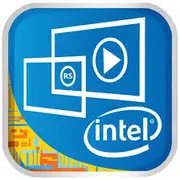Intel Core M-5Y51

Intel Core M-5Y51: 超省エネルギーなプロセッサー、ウルトラポータブルデバイス向け
2025年4月
はじめに
2015年に発売されたIntel Core M-5Y51プロセッサーは、モバイルチップの進化において重要なステップとなりました。年数が経過したにもかかわらず、中古や低価格のウルトラブックで今なお見かけることができます。この記事では、2025年に彼の有用性について、どのようなタスクをこなせるのか、そしてこのCPUを搭載したデバイスに注目するべき人々について考察します。
アーキテクチャとプロセス技術
14nmとBroadwellマイクロアーキテクチャ
Core M-5Y51は、14nmプロセスで製造されたIntel Coreの第5世代にあたるBroadwellマイクロアーキテクチャを基にしています。これにより、消費電力を抑え、熱特性が向上しました。
- 2コア / 4スレッド:Hyper-Threadingにより、軽負荷のタスクを並列処理できます。
- ベースクロック:1.1GHz、Turbo Boostは最大2.6GHz(一時的なオーバークロック)。
- L3キャッシュ:4MB - オフィスアプリケーションやブラウジングに適した容量。
- 統合されたグラフィックス:Intel HD Graphics 5300(24 EU、最大900MHz)。
アーキテクチャの特徴:
- パッシブ冷却:TDPが4.5Wのため、多くのデバイスはファンなしで動作可能。
- AVX2命令のサポート:メディア処理での加速(例:ビデオエンコーディング)。
消費電力とTDP
4.5W - 当時の記録
4.5WのTDP(熱設計電力)はCore M-5Y51の重要な特長です。これにより、超薄型ノートPCやハイブリッドデバイスの製造が可能となりました。
- エネルギー効率:Intel Smart CacheおよびDynamic Power Coordination技術がコアへの負荷を最適化します。
- 稼働モード:アイドル状態ではクロックが300MHzまで下降し、バッテリー寿命が延びます。
同時代のプロセッサとの比較:
- Intel Core i5-5200U(15W TDP)は30%パワフルですが、アクティブ冷却が必要。
- Apple A8X(2014年)は類似のTDPですが、シングルスレッドタスクでの性能は高い。
実際のタスクにおけるパフォーマンス
オフィスとメディア
- オフィスアプリケーション(Word、Excel):大きなテーブルであっても遅延なく動作します。
- ウェブブラウジング:8GB RAMでChromeを使い10-15タブ開くと、ちらつきが生じる場合があります。
- 1080p/4Kビデオ:VLCやYouTubeでのスムーズな再生(ハードウェアアクセラレーション利用)。
ゲーム
- 軽量ゲーム:Minecraft(低設定で30-40 FPS)、Stardew Valley、Hearthstone。
- 最新のタイトル:AAAゲームには不向きで、最低設定でも動作は難しい。
Turbo Boost:短期間の急増
1-2コアで負荷がかかると、クロックが2.6GHzに上昇しますが、20-30秒後に過熱のため減少します。たとえば、Photoshopを使用する際、プロセッサは「オーバークロック」されますが、フィルターのレンダリング時にはベースクロックに戻ります。
使用シナリオ
2025年にCore M-5Y51が適する人は?
1. 学生:テキスト、プレゼンテーション、オンラインコースでの作業に適しています。
2. 旅行者:1kg未満のデバイス(例:Lenovo Yoga 3 Pro)で、7-9時間のバッテリー寿命。
3. サブデバイス:強力なPCの補助としての使用。
向いていない人:
- 動画編集者、ゲーマー、エンジニア(最低4コアと独立したグラフィックが必要)。
バッテリー寿命
TDP 4.5Wがバッテリーに与える影響
バッテリー容量が40Whの場合、読書やビデオ再生モードでは8-10時間の稼働が期待できます。
- 省電力技術:
- Intel SpeedStep:動的なクロック調整。
- Cステート:未使用コンポーネントの切断。
- アドバイス:OSの設定でTurbo Boostをオフにすることで、バッテリー寿命が15-20%向上します。
競合との比較
AMD、Apple、旧世代Intel
- AMD A6-8500P(15W TDP):グラフィックスは優れていますが、消費電力は高い。
- Apple M1(2020年):同じTDPで、マルチタスクにおいて3-4倍のスピード。
- Intel Core i3-10110U(10世代):パフォーマンスが50%向上しますが、アクティブ冷却が必要。
結論:Core M-5Y51は現代のチップには劣りますが、価格面では優位(中古市場で$150から)。
長所と短所
強み:
- パッシブ冷却(静かな動作)。
- コンパクトなデバイス(厚さ12mmから)。
- 基本的なタスクには十分なパフォーマンス。
弱み:
- 低いマルチスレッドパフォーマンス。
- 古いグラフィックス(HD 5300はDirectX 12 Ultimateをサポートしない)。
- アップグレードの制限(メモリとSSDはしばしばハンダ付けされている)。
ノートパソコン選びのおすすめ
デバイスタイプ
- ウルトラブック:Dell XPS 13(2015)、HP Spectre x360。
- 変形型タブレット:Microsoft Surface Pro 4。
注目ポイント:
1. RAM:最低8GB(2025年に4GBは苦痛)。
2. ストレージ:SSDのみ(NVMeが望ましい)。
3. ディスプレイ:快適な作業のためにフルHD以上。
4. ポート:周辺機器接続のためにUSB-C/Thunderbolt。
価格:Core M-5Y51を搭載した新しいデバイスはもはや制作されていませんが、中古モデルは$150-300です。
最終結論
Intel Core M-5Y51はウルトラポータブルなタスク向けの専用プロセッサーです。2025年においては:
- インターネットやオフィス向けに軽いノートパソコンを必要とする人々に向いています。
- 静音性と長いバッテリー寿命を重視する方向け。
主要な利点:
- 中古市場での低価格。
- 一日中充電せずに作業できる可能性。
2025年の代替案:
- Intel Core i3-N305(7W TDP、$400から)の新しいノートPC。
- ARMタブレット(例:SQ3のSurface Pro X)。
限界に耐えられない場合は、最新のプロセッサーに追加料金を支払う方が良いでしょう。しかし、あまり要求がないタスクにはCore M-5Y51は依然として実用的な選択肢です。
基本
CPUの仕様
メモリ仕様
GPUの仕様
その他
ベンチマーク
他のCPUとの比較
ソーシャルメディアで共有する
または当サイトへのリンクを追加
<a href="https://cputronic.com/ja/cpu/intel-core-m-5y51" target="_blank">Intel Core M-5Y51</a>